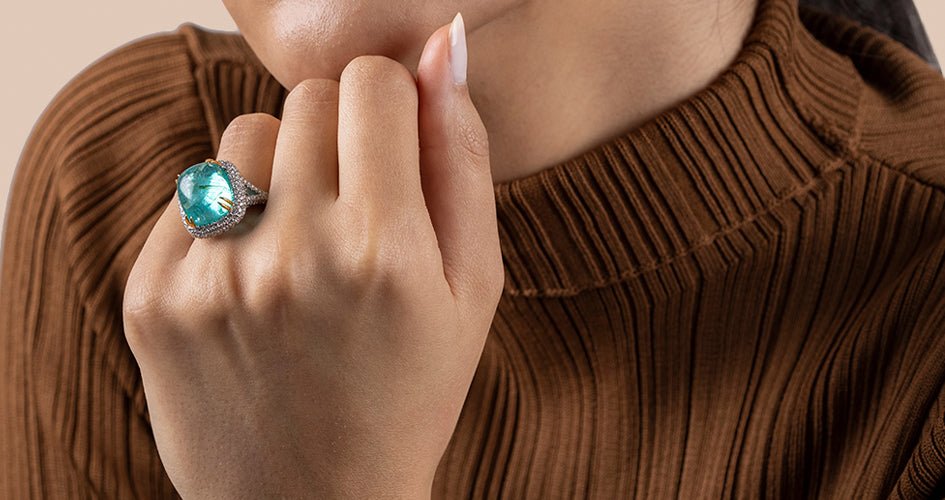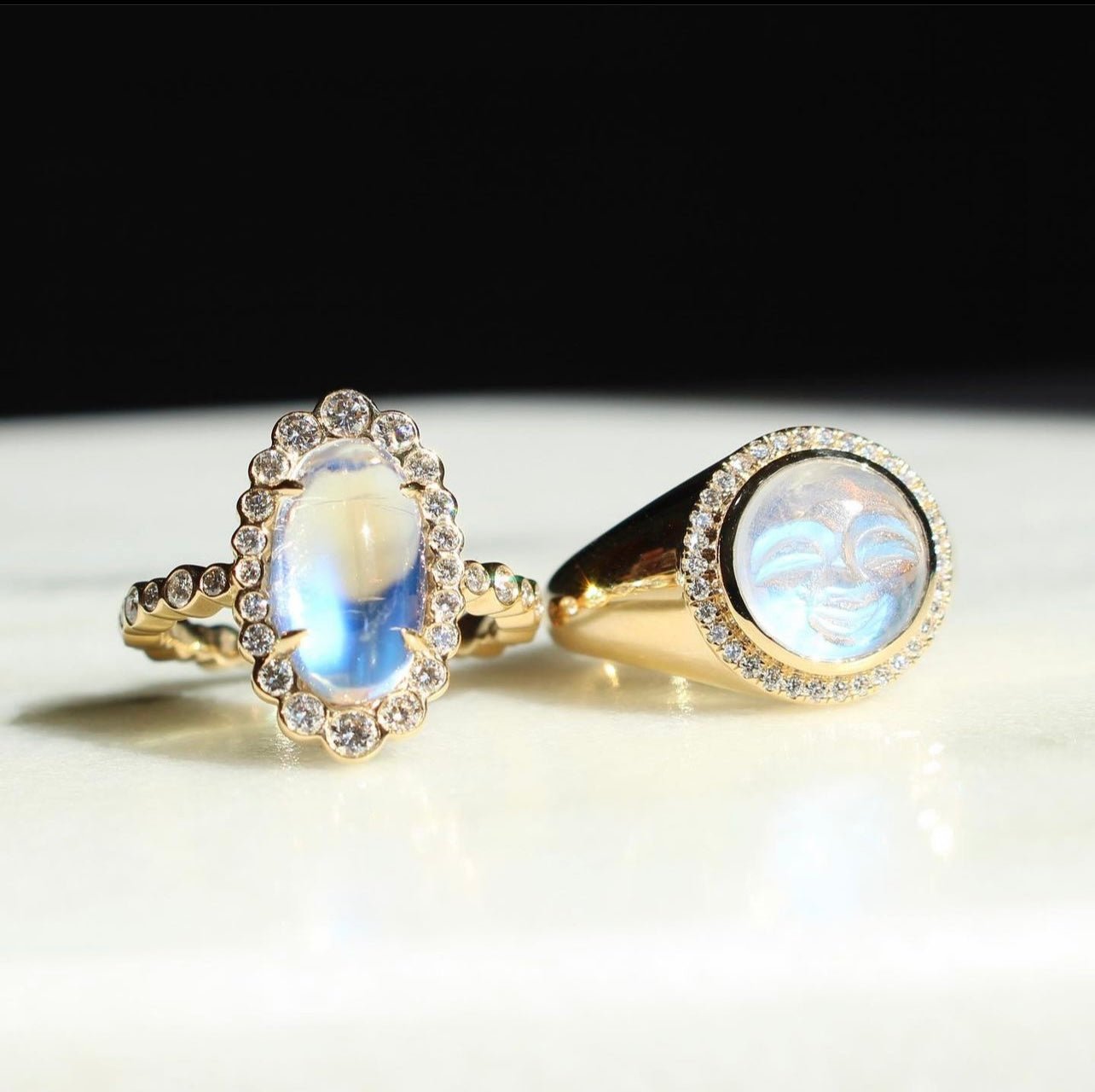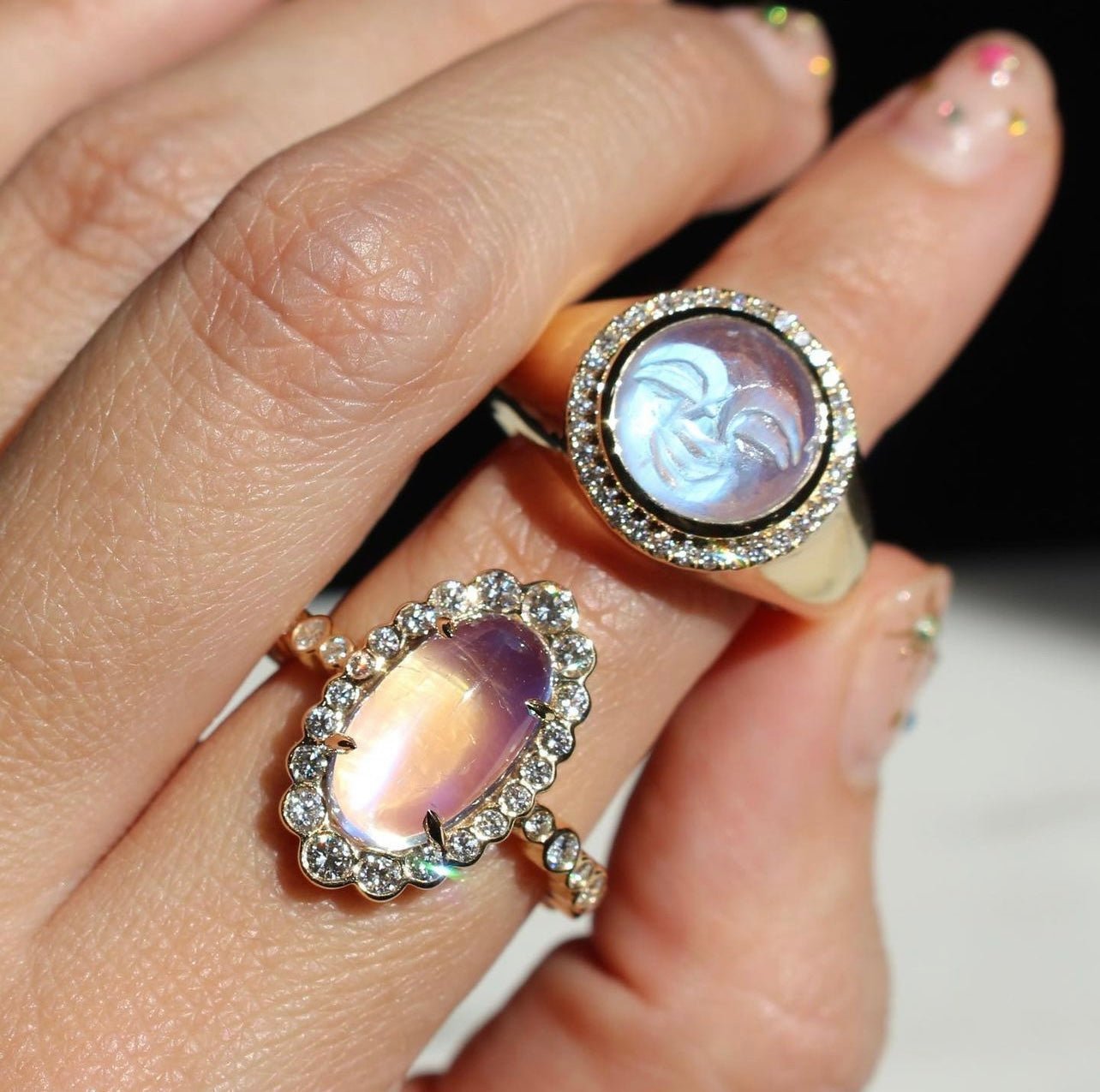Authenticity is a divine characteristic in exotic gemstones. Consequently, a commendable jewelry collection includes rare gemstones with undeniably genuine origins. Although some may opt for lab-created gemstones and diamonds, others still consider ground-mined stones to be a treasure worth prioritizing.
The Rise of Lab-Mined Jewels
Picture a precious stone, glowing with all its rare excellence. In part, the reason earth-mined stones are so revered is for their history. Diamonds, emeralds, and rubies mined from the earth are serendipitous products of nature. It's no wonder that these gemstones have been timelessly regarded for their valeur.
In recent years, the emphasis on lab-mined stones has stemmed from a noble effort: to ensure clean origins and fair practices in diamond mining. Traditionally, precious gems have been valued for their rarity and unique splendor.
These gems may present an ethical alternative to some unsavory practices, but they are not the only option for those seeking precious, clean-origin jewelry. When it comes to Paraíba tourmaline, there are differences to consider before opting for a lab-mined stone.
The Crucial Truth About Lab-Created Tourmaline
A chemically and optically identical nature characterizes gems created in a lab. Lab-mined stones are not quite imitation gems since they mirror authentic precious stones in their chemical makeup and appearance. In fact, these gems are virtually similar to ground-mined diamonds, with two exceptions. They're not found in nature, and they have no rarity.
Reduced Authenticity
Jewelry enthusiasts know a piece is well-renowned when it displays expert craftsmanship and contains precious jewels. Owning fine jewelry is an experience marked by the history of the gem itself and the craftsmanship used in transforming that gem. Within nature, precious gemstones are formed over millions of years. They're then discovered, and miners work to retrieve them so that you can personally enjoy the exquisite natural beauty of the earth.
When tourmaline is grown in a lab, it mimics the natural processes of earth-grown tourmaline, but at a fraction of the time. There's a difference to consider with authenticity, too. Though this kind of tourmaline is chemically and visually similar to natural tourmaline to the naked eye, there is a primary variation between the two.
Natural-mined diamonds and gems contain unique inclusions from the earth's crystallization process. Within the molten stage of stone creation, gases and other chemicals mix. This mixture of gases and chemicals is what marks earth-mined tourmaline as rare; it was formed in a magnificent natural chemical process over millennia to produce something undeniably remarkable.
Quality Factors to Consider in Genuine Tourmaline
Genuine tourmaline is well-loved for its striking neon hues and brilliant colors. Tourmaline is highly regarded for its natural traces of elements such as iron, titanium, copper, and multiple others that yield a fantastic array of colors. These colors are the consequence of remarkable chemical reactions that affect the physical appearance of this gem.
Color
A realm of tourmaline color varieties is identifiable by trade names. Rich reds, pinks, oranges, and brown-tinted gems are known as rubellite. Blues, greens, and cooler tones have a home in the name indicolite. An intensely green-colored stone is known as a chrome tourmaline, although it gains its hue from an element called vanadium.
A tourmaline gem that displays multiple colors in one stone is known as a parti-colored tourmaline. While this kind could portray many stunning colors, a popular combination of hues is green and pink.
One unique color variation is the watermelon tourmaline, which displays pink in its center and green around its edges. Finally, the Paraíba tourmaline is a remarkable electric blue. Paraíba tourmaline stones may be more violet-blue or cyan in color.
Cut
When it comes to Paraíba tourmaline, these precious gems are almost always custom-cut for a more brilliant view of their intense color. One aspect of the tourmaline's brilliance is its pleochroic nature which allows multiple colors to refract from varying crystal directions.
Typically, one of the colors refracted will appear visually darker than the other. Tourmaline shows ideal color characteristics when viewed lengthwise, but many gem-cutters opt to position a fashioned stone based on its color depth.
Clarity
The unique growth process of a tourmaline includes developing in an environment abundant with liquids. As a result, this kind of stone often captures these liquids in the crystallization stage. It's worth noting that highly saturated stones mask the appearance of these inclusions, making them appropriately valuable while being pleasing to the eye.
As color is the most prominent value factor, a Paraíba tourmaline is highly regarded for its minimal inclusions and authenticity.
Authentic Paraíba Tourmaline
Connoisseurs of tourmalines know the exceptional Paraíba tourmaline variety is named for its origins in Paraíba, Brazil. It's one variation of the impressive tourmaline stone adored by many and worn by those who enjoy rarity. This variation is relatively fresh in the scope of history; it was discovered as recently as 1980.
The brilliance and vivacious colors of Paraíba tourmalines enthralled the gemstone world from their discovery. They quickly rose to prominence, and they are now among the most sought-after gemstones in the world.
The Gemological Institute of America developed sophisticated criteria which require chemical analyses to determine a tourmaline's origins. A tourmaline's origins are noteworthy because Brazilian Paraíba tourmaline stones are typically regarded as more valuable than neighboring Paraíba tourmalines.
If it has not been clear this far, Paraíba tourmalines are uniquely rare for their copper contents. Copper is the element responsible for tourmalines' breath-taking color saturation in blue, indigo, and cyan hues.
Before Paraíbas, copper had never been found to occur in a tourmaline naturally. Upon further research, scientists also discovered the presence of the element manganese in this rare gem.
The exciting exchange between copper and manganese in the tourmaline gem influences Paraíba tourmalines to appear in a variety of shades: emerald green, turquoise, sky blue, sapphire blue, indigo, blue-violet, and purple.
Higher concentrations of copper will yield a more striking electric blue shade, as well. Their vibrant turquoise to green color array is unlike any other gemstone on the planet. Because of the rarity of this historic find, these precious jewels are truly valuable.
The exceptional vibrancy of the Paraíba tourmalines presents itself more explicitly when the stone has been cut. Once faceted, these gems scintillate a unique fire that is all their own. Those wearing Paraíba tourmaline jewelry pieces know this exotic stone glows unlike any other.
Mark Henry's Electric Blue Tourmaline
Mark Henry has long specialized in tourmalines. The electric blue-green hue of these precious gems has made it a stone coveted by many. In Mark Henry jewelry, these exquisite tourmaline stones often feature brilliant midnight blue sapphires and white diamonds surrounding their edges for a beautiful contrast.
With unparalleled craftsmanship, Mark Henry Paraíba tourmaline jewelry exhibits timeless designs that allow each stone to reflect its illustrious colors brilliantly.
Victorian Paraíba Ring
The Victorian era ushered in a wave of new jewelry designs influenced by the reign of Queen Victoria in the late nineteenth century. The Mark Henry Victorian Paraíba Ring joins rich historical design work with an illustrious modern Paraíba gemstone.
It features an oval-shaped Paraíba tourmaline focal stone set within a stunning hand-carved milgrain metal border. Round diamond trios surround either side of the center stone to lend fire and brilliance to the ring's design.
Adding even more splendor, two additional bezel-set round diamonds display a hand-etched milgrain finish that matches the hand-carved work featured around the central gem.
Teardrop Paraíba Pendant
The finest pieces of jewelry are exquisite from every angle. Those who adore tourmaline gems are aware that elongated cuts allow tourmalines to look their best. Mark Henry's Teardrop Paraíba Pendant, which is accented by a variety of stunning white diamonds, also displays blue sapphires placed elegantly on the side galleries.
These sapphires act as an attractive contrast to the pastel blue colors present in the center stone. In 18-karat white gold, this pendant radiates uniquely from each side.
Contrasting Double Halo Paraíba Ring
Deep blue sapphires and bright Paraíba tourmalines were made for each other. The hallmark of tourmalines is their vibrancy.
In the Mark Henry Contrasting Double Halo Paraíba Ring, a pear-shaped center Paraíba tourmaline is the center of attention. Brilliant-cut round white diamonds and elegant blue sapphires surround the tourmaline to create a visual contrast of striking blue hues. Glowing white diamonds also add detail to this ring's shoulders, creating a mesmerizing accent.
One-of-a-Kind
When it comes to fine exotic jewelry, you deserve high-quality artistry that stuns with undeniable elegance. The gems you wear should exhibit the scrupulous attention to detail that only master artisans could accomplish.
The Paraíba tourmaline is one stone that lends itself to such excellence. Wearing tourmalines is not only an ode to the beauty of exotic gemstones, but doing so also pays homage to nature's awe-inspiring resources.
Lab-created tourmalines may be chemically identical to land-mined tourmalines. However, the exciting history of earth-mined Paraíba tourmalines demonstrates the forces of nature that cause exotic gems to form in the earth over time and surprise us with their beauty.
Sources:
Tourmaline Quality Factors | GIA






HOW MUCH IS THE MAN MADE PARAIBA BALL RING??
+306931212228
+306907577965
GEORGE RENOS SYMEONIDIS
READY
SIZE 4.5 USA FEMALE